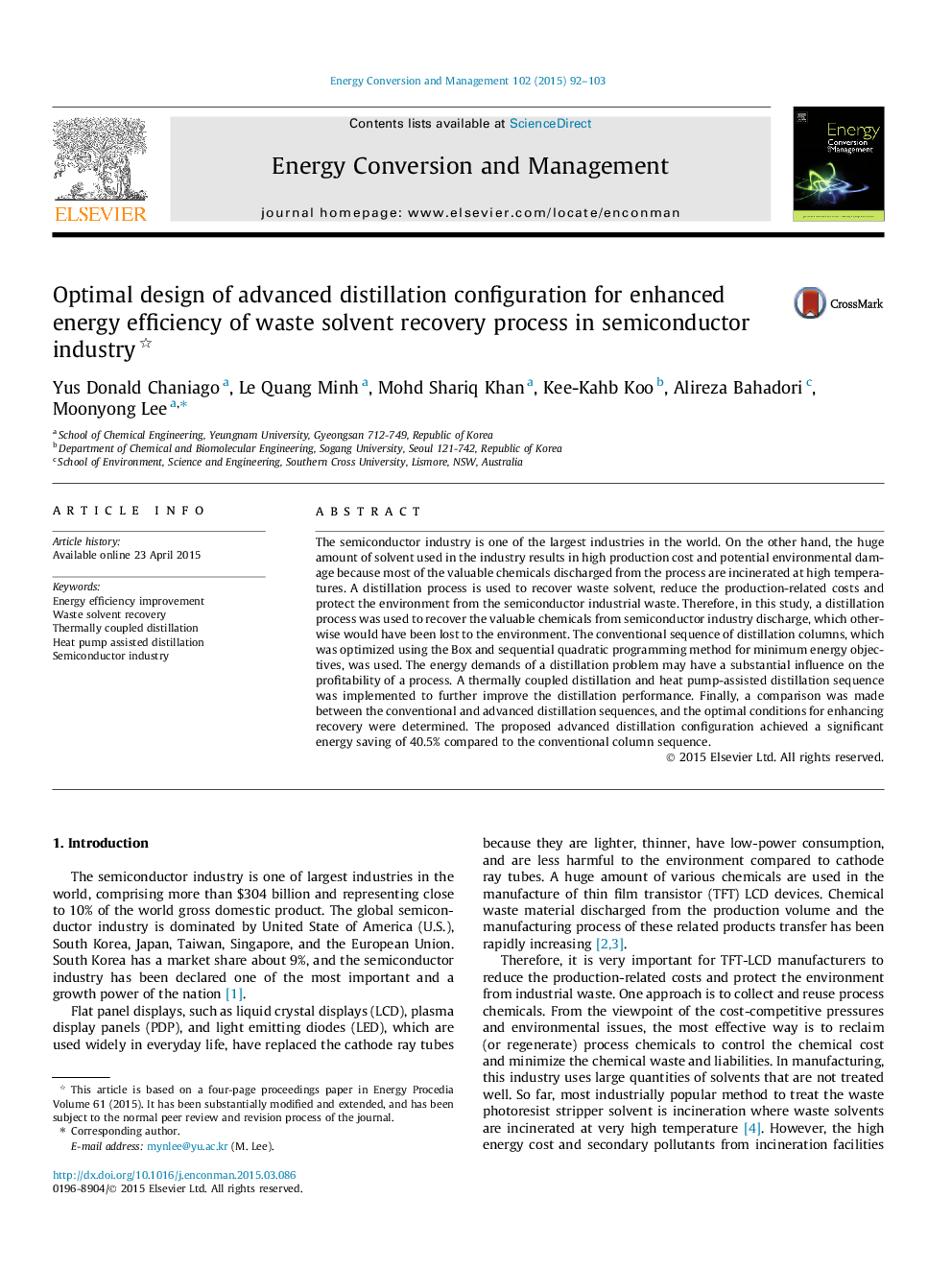| Article ID | Journal | Published Year | Pages | File Type |
|---|---|---|---|---|
| 763537 | Energy Conversion and Management | 2015 | 12 Pages |
•Thermally coupled distillation process is proposed for waste solvent recovery.•A systematic optimization procedure is used to optimize distillation columns.•Response surface methodology is applied to optimal design of distillation column.•Proposed advanced distillation allows energy efficient waste solvent recovery.
The semiconductor industry is one of the largest industries in the world. On the other hand, the huge amount of solvent used in the industry results in high production cost and potential environmental damage because most of the valuable chemicals discharged from the process are incinerated at high temperatures. A distillation process is used to recover waste solvent, reduce the production-related costs and protect the environment from the semiconductor industrial waste. Therefore, in this study, a distillation process was used to recover the valuable chemicals from semiconductor industry discharge, which otherwise would have been lost to the environment. The conventional sequence of distillation columns, which was optimized using the Box and sequential quadratic programming method for minimum energy objectives, was used. The energy demands of a distillation problem may have a substantial influence on the profitability of a process. A thermally coupled distillation and heat pump-assisted distillation sequence was implemented to further improve the distillation performance. Finally, a comparison was made between the conventional and advanced distillation sequences, and the optimal conditions for enhancing recovery were determined. The proposed advanced distillation configuration achieved a significant energy saving of 40.5% compared to the conventional column sequence.
Graphical abstractFigure optionsDownload full-size imageDownload as PowerPoint slide
